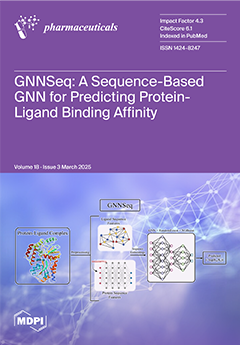Background/objectives: Schistosomiasis is caused by flatworms of the genus
Schistosoma, for which mollusks of the genus
Biomphalaria are intermediate hosts. Niclosamide (NCL) is a molluscicide recommended by the World Health Organization (WHO) for control of
Biomphalaria. Although effective, it is expensive
[...] Read more.
Background/objectives: Schistosomiasis is caused by flatworms of the genus
Schistosoma, for which mollusks of the genus
Biomphalaria are intermediate hosts. Niclosamide (NCL) is a molluscicide recommended by the World Health Organization (WHO) for control of
Biomphalaria. Although effective, it is expensive and environmentally toxic, which raises concerns regarding its widespread use. As a result, we explored new synthetic substances as alternative strategies for controlling
Biomphalaria glabrata. We evaluated the molluscicidal activity of 2-(1
H-py-razol-1-
yl)-1,3,4-thiadiazole and 2-(4,5-dihydro-1
H-pyrazol-1-
yl)-1,3,4-thiadiazole derivatives against
B. glabrata snails and embryos, as well as
Schistosoma cercariae (infective larvae).
Methods: Adult and young snails were added to 24-well plates containing 20 synthetic compounds from the PDAN series for initial screening over 96 h at a concentration of 100 ppm. Water and NCL (2 ppm) were used as the negative and positive controls, respectively. Active compounds in the adult
B. glabrata assay were selected for the tests vs. embryos and cercariae.
Results: In the initial screen, only PDAN 52 (63 ± 4%) and 79 (12 ± 3%) showed molluscicidal activity at a concentration of 100 ppm up to 48 h. Consequently, we selected only PDAN 52. The LC
50 value found in the tests on embryos after 24 h of treatment was 20 ± 2 ppm and, after 48 h, it was 4 ± 0.5 ppm. Against cercariae, we measured an LC
50 value of 68 ± 5 ppm after 4 h of treatment. PDAN 52 did not induce marked toxicity against a second mollusk,
Physella acuta, after 48 h of exposure.
Conclusions: We highlight the promising molluscicidal activity of PDAN 52 against different developmental stages of the mollusk,
B. glabrata, as well the infective larvae of
Schistosoma mansoni.
Full article






